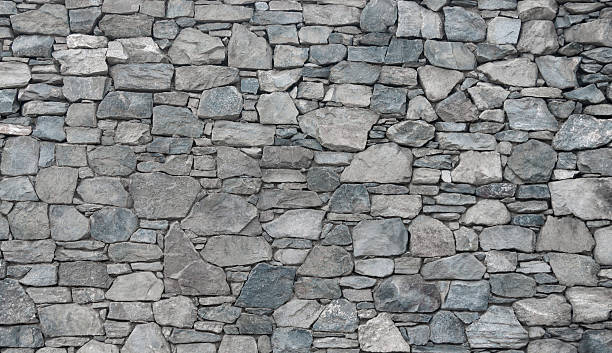EPISODE 807 SAD FATE OF THE PINTA….A STONEHOOKER FOUNDERS OFF MERIGOLD POINT
alan skeoch
Small stone slabs and large stone slabs artfully arranged.
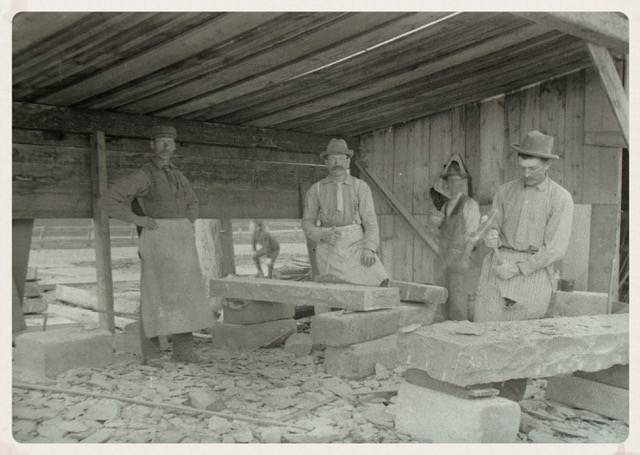
Stonemasons working on big slabs of stone. THe slabs from Port Credit were much smaller …they had to be lifted by hand
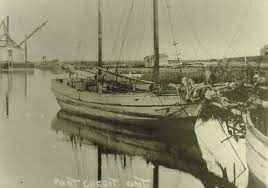
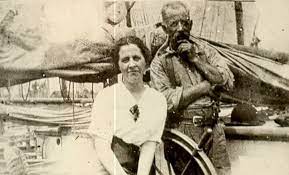
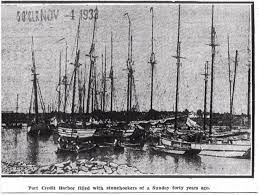
PART TWO OF “SPEECH THAT WAS NEVER GIVEN
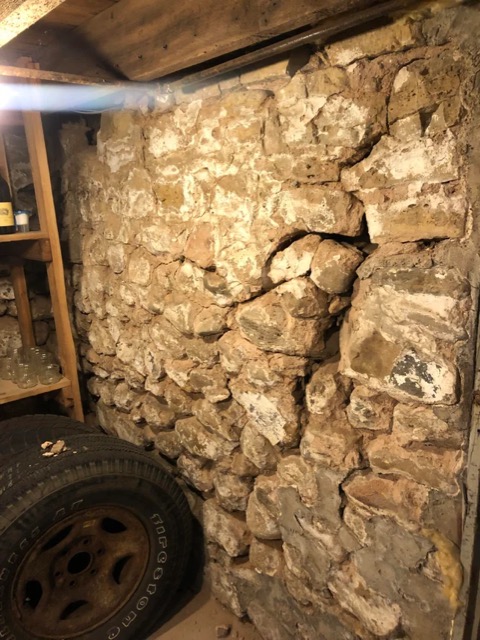
THE FATE OF THE PINTA, STONEHOOKER
Stonehooking was a dirty business and the income was marginal. Stonehookers earned about $10 to $15 for a toise of stone slabs…about
the same size as a chord of wood but one hell of a lot heavier. Just for the sake of readers that are unfamiliar with stonehooking, let’s pretend
you are joining the crew of the “Pinty”, a stonehooker whose wreck mayu still be found in deep water off Marigold Point where it foundered in 1882
“What is expected of me?”
“Never heard of stonehooking ?”
“No…but I need money”
“You won’t get rich stonehooking.”
“What am I to do?”
“lift stone slabs … shale slabs”
“Where are they found?”
“Three places…Easiest slabs are in shallow water close to shore.
Jump in the water and use an iron bar to loosen the slabs then dump them
into the scow. Then row out to the Pinta … pile them in the hold or just pile them
on the deck even though that makes the Pinta a little too top heavy unless we are careful.”
“You said the slabs can be found in three places.””
“The other two places are more difficult. Sometimes slabs can be
found on shore where the bedrock surfaces. Easy to get the stone there but we often
have to be sneaky about it. Some farmers threaten with shotguns.The farmers hate us
because the stone protects their farm land.
When we get those slabs out the waves smash inland. Erode the land. The graveyard west of Port Credit was
undermined and coffins swept out to open water. Or so I heard. Best to have someone climb the mast
to ensure no farmer in sight then we rush in and grab the slabs in the scow. “
“Sounds like fun. “
“May sound funny but not so. The slabs are heavy and getting slabs from shore is now illegal but
we do it anyway.”
“And the third way to get slabs?
“Deep water stonehooking. Blind dragging with a stone rake. Like fishing only a damnsite more
difficult. We drag a hook like thing that hooks slabs that we cannot see. Then we have
this ’stone rake’ which gets under the invisible slab ….loosens it…then we lift it from
the bedrock to the schooner or the small flat bottomed scow. “
“Sounds tough.”
“One easy way to get slabs is by wading in shallow water. Easy in summer but hell in
the cold weather. “
“Are the slabs heavy?”
“Most times they are. Bigger the slab the better the ’noise”….Buyers want lots of
the big slabs “
“Why?”
“For foundations . Toronto is booming….need lots of slabs.”
“Dirty work ….to much lifting. “
“How many times?”
“Count the times. Imagine one slab. First lift it from Lake Ontario into the scow….then from the
scow to the schooner deck or hold….then from the schooner to the Totonto pier …then, often
from the pier to wagon haul by a tema of horses. … get to hate that slab.”
“Sail back to port Credit empty”
“Hard to sail a schooner the it’s empty so we fill the hold for the return trip”
“Fill it with?”
“Horse manure. Toronto streets and berms are full pop horse manure….thousands of horses.”
“I wondered why the “Pinty” smelled odd?”
“Port Credit farmers want horse manure. Smells better than pig manure. Actually I like
the smell.”
“Manure is easier on the schooner than slabs of shale. Thos slabs crack the wooden deck
and do great damage in he hold. That’s why so many stonehookers look like they are on
their last legs.”
“Easy to see a stonehooker from a distance?”
“How?”
“The sails are paired so often that it’s hard to find a piece of original canvas. Mended
often. Not a pretty sight.”
“Why wold a schooner owner do stonehooking then?”
“Despertation. No other way to make a living. Lots of schooners available cheap…some
beautiful schooners end up as bedraggled stonehookers.”
“Why?”
“The schooners are obsolete. The age of sail is over. Internal combustion engines have taken over. Moe=re reliable
than sailing.
“Enough talk … now get to work lifting slabs. Take off your shirt and shoes. Here’s a crowbar.
You can take your pans of as well if you wish. We need to get a shipload today.”
“Were you joking about the coffins?”
“Nope.”
(Alan Skeoch, imaginary conversation between an apprentice stonehooker and an old hand.
Aboard the Pinty on that fateful day the ship went down. All hands drowned or froze to death.}

Foundation of 19th century house built of field stone rather than blue shale.
THE SINKING OF THE PINTY IN 1882 — ALL CREW DROWNED EXCEPT ONE MAN WHO FROZE TO DEATH
(article below was from Schooner Days)
The Pinta, commonly known as the “Pinty,” was a scow, built for S. H. Cotton at Port Nelson in 1869, She was 58 feet on deck, 14 feet 4 inches beam, and 4 feet 8 inches deep, … Her end was tragic. Coming down from Oakville one cold morning, with a nor’west wind hoofing her along, she tried to go about and stand in for the land off Marigold’s Point, the wind following its usual practice at that point by hauling to the north.
The Pinta had a big barndoor centreboard. The box was open slotted and came above the deck. The board was new and buoyant. It should have been ballasted until it was sufficiently waterlogged to sink of its own weight. When the snow squall struck the Pinta she luffed and got in irons, and as she lost way her board rose so high in the box that it caught the foreboom and would not let the foresail come over. That doomed her. A second puff caught her canvas aback and rolled her over. Men who were shingling a barn on Marigold’s Point saw her in trouble. She was blotted out by the snow flurry. When it disappeared she had disappeared too.
“She was loaded too deep, ” said Captain Block. “I guess her hatches just filled when she tried to go about.” All hands were lost, although one man managed to get into the scow towing astern. The offshore wind carried him across the lake and the scow was picked up on the beach at Winona, his frozen body jammed under the thwarts.
From Port Credit harbor, a tug was seen going up the lake in a futile attempt to render assistance. It was the Mixer, a Toronto boat owned by Frank Jackman. And Port Credit
sailors still curse the well meant action of the men on Marigold’s Point, who saw the disaster and hastened word to Toronto, when the schooner Morning Star, sound and almost new, with Abe Block and half a dozen others right there to handle her, lay at the dock in Port Credit ready to put out at a minute’s notice hours nearer the disaster in those pre-telephone times.
It was not until next day that word of the foundering of the “Pinty” reached Port Credit. The victims of the tragedy were William and Joseph Quinn of Oakville, brothers of the owner, Capt. James Quinn, and Bus Howell. Capt. Jas. Quinn and Capt. Mark Blow had left the Pinta some time before her fatal voyage. Oakville sailors had begged the younger mariners not to make a start, for the north wind threatened snow before they left.
Twenty years later, in 1902, the Wood Duck sailed over the sunken wreck of the Pinta off Marigold’s Point. Her fatal centreboard box was still discernible down in the clear green water amid the remains

